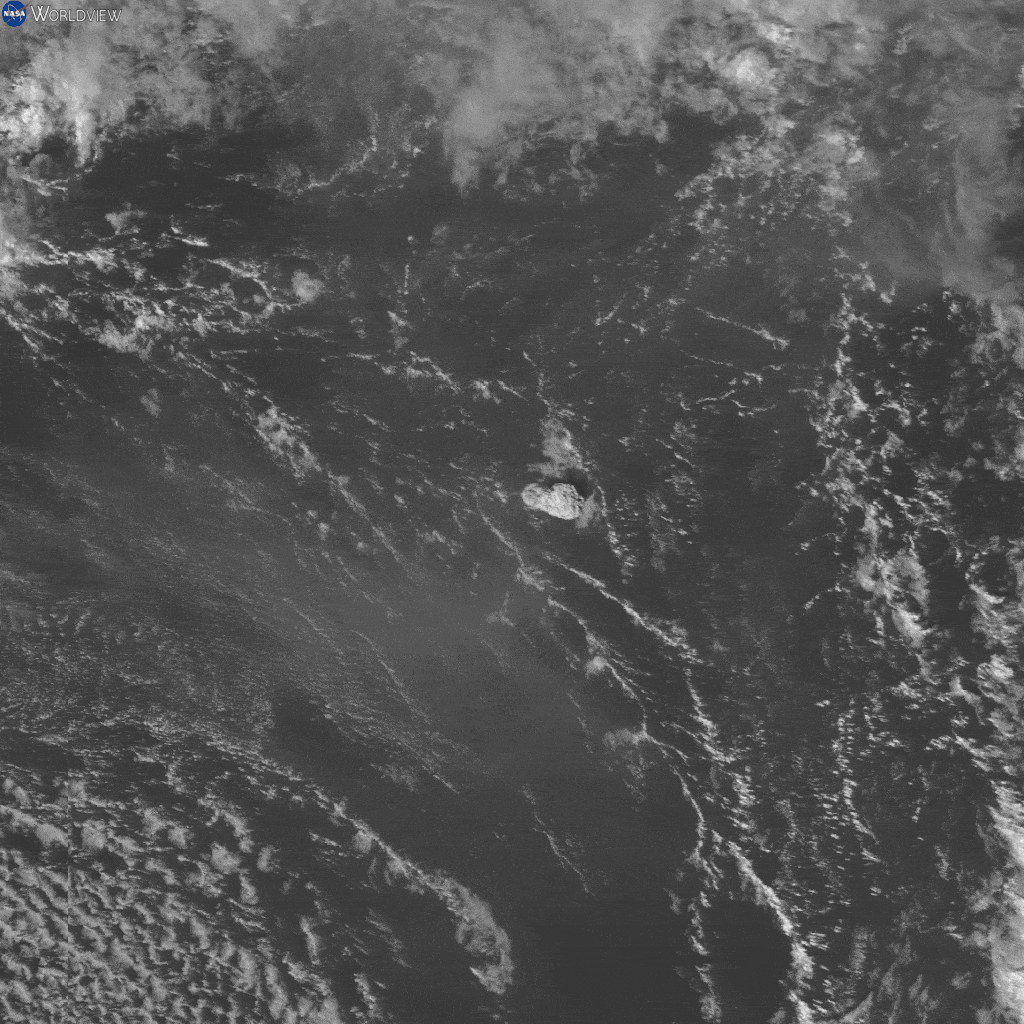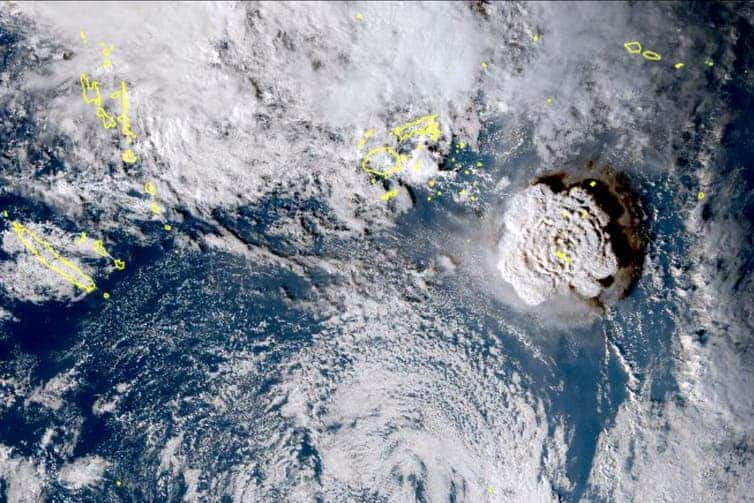The Hunga Tonga-Hunga Ha‘apai volcano erupted on January 14, causing massive shockwaves and tsunamis that lead to 3 deaths and caused substantial damage to the Tongan Islands. Thanks to satellite imagery, researchers were able to observe this process in stunning detail. Here are some of these observations.

Ashes and cooling
The eruption released vast quantities of aerosols into the atmosphere. These particles reached the stratosphere, some 9 miles (15 km) above the surface. The stratosphere is a dry part of the atmosphere without clouds or humidity — so everything that reaches the stratosphere has little to interact with and is easily observable from above.
The ashes from volcanoes consist largely of sulfur dioxide; once this sulfur dioxide reaches the atmosphere, it filters out some of the solar rays, producing a cooling effect. This effect can be quite powerful. Nearly 31 years ago, the Pinatubo volcano, in the Philippines, released 15 million tons of sulfur dioxide into the stratosphere. This tremendous amount took about two years to be depleted through chemical reactions, temporarily cooling the atmosphere by about 0.6 °C on average around the globe.
Pinatubo’s eruption was used as a source of misinformation by climate denialists who wanted to diminish human interference from global warming — a volcanic eruption only produces temporary effects. As a matter of fact, Pinatubo’s effect was predicted by a climate model, which confirmed the predictions from climate models as reliable sources.

The eruption of Hunga Tonga-Hunga Ha‘apai is not as strong as Pinatubo’s, but the ashes will cool the air a little bit. However, it’s important to keep in mind that this won’t have any significant effect on climate change.
Waves
When the volcano sent ashes flying into the air, it caused a disruption in the atmospheric pressure levels. Just like hitting a drum’s membrane, the explosion pushed the air and changed the air pressure globally.
Researchers monitor these pressure changes through instruments called barometers. But because the planet is very big, the sudden change in air pressure due to the eruption took a while to reach different parts of the planet. For instance, it took 15 hours to reach the University of Hertfordshire Observatory in the UK, which is 16,500 km (around 10,253 mi) away from the volcano and it was registered by their barometer.
The propagation of the wave becomes very clear when we piece together a series of barometer detections. This was registered by the United States’ station on January 15:
The eruption was also a source of waves in the atmosphere, sending concentric ripples traveling the planet’s atmosphere as if it is not such a big deal. A stunning animation of the event was produced by theNational Oceanic and Atmospheric Administration (NOAA)’s GOES-West satellite, displaying the waves traveling the atmosphere just after the eruption.

So where do these waves go? Well, if you’re a flat-earther, this may upset you. Because the Earth is round, the wave travels to the furthest point, until it reaches a point and becomes a wave source itself that travels all the way around again, gradually losing energy until it disappears.
There were also some “eyewitnesses” of the process. Registered by the Gemini Observatory at Maunakea in Hawaii, the following video shows a bunch of clouds moving normally, but the thin ripples that appear in the sky were caused by the eruption waves.
Never before could we monitor the atmospheric response to events such as this eruption, this is thanks to the number of cameras we have everywhere and better sensors to register the impacts. We didn’t have a fast way to communicate before, in this case, a few hours after the activity was possible for scientists to share their observations and shock everyone on how interactive the Earth system is. Let’s wait for the next crazy atmospheric phenomenon to leave us in awe.
Was this helpful?



